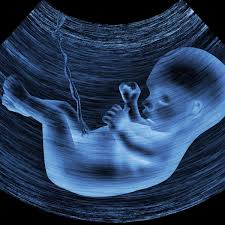The lasting cost of plastic
- Melissa Willis
- Jun 2, 2021
- 3 min read
As a modern woman, partner and mother, I am confronted with plastic choices daily, if not hourly, from what I wear, to my choice of waterbottle, my son's lunchbox, my baby’s nappy, the toys I gift friends, toothbrushes, straws, shopping bags, coffee’s on the run, and the list goes on (sadly longer than we would like to think since so much today is made from plastic).
So what’s the big deal?
Science has shown that the plastic bag we use today, will be around long enough to find its way back into the human body for generations to come.
Over time, the sun and its heat break disposed plastics into smaller and smaller pieces, forming microplastics under five millimetres long. Nanoplastics are even smaller and creep into more aspects of life. These tiny participles leach into farmland soils and waterways, affecting the nutrient profile of the food we eat. They have unfavourably touched every aspect of our existence – from the entanglement of marine life, the nests of birds, the bellies of fish, beaches spread across the globe and finally finding their way into the placenta of the human race.
In December 2020, the Guardian released a head-spinning headline "Microplastics revealed in the placentas of unborn babies".
Similarly, invisible plastic is creating havoc in male fertility. The Guardian reports that “research suggests sperm counts have dropped by half in the last 50 years and that 20-30% of young men today have sperm counts in a range that is associated with reduced fertility.”
When we can start to understand how plastic is becoming part of our DNA, the urgency of our plastic crisis and our habit towards it will start to shift. The accurate analogy "it's only 1 straw (1 nappy, 1 packet, 1 sequin, 1 bottle", said 8 billion people" starts to unravel and have its consequential effect. Equally, switching 1 straw, 1 nappy, 1 packet, 1 sequin, 1 bottle will generate the change and impact needed to recorrect for generations to come.
How did we get here?
Affordability, convenience and habit are the cornerstones driving our ‘Planet Plastic’ off her axis and into our grave. There are hundreds of choices we can make every day to cultivate more considered habits and opt for alternatives without forgoing convenience and comfort.
Did you know?
Since plastics takes nearly half a century to degrade, most of it still exists. 70% of all plastic ever produced has been released and remains in our environment today! 91% of all plastic is not EVER recycled.[i]
So what’s the solution?
When I started off researching this topic, the obvious answer seemed clearer than the findings provided. To understand the full spectrum of impact and benefits of a particular shopping bag, there is much more to consider than just the impact of raw materials, production and preparation, logistics, disposing and recycling.
The complication of litter and the systemic impact of our habits have had a direct effect on the opportunity for both man and planet to collectively thrive.[ii]
Absolutely everything we consume has some form of carbon emission and at the end of the day, single-use anything is tightening the grip on Earth’s jugular. Once a product that cannot degrade in our lifetime (or three generations to come) hits the waste stream, it is there forever. This is the calamity of single-use plastic. There is nothing lightweight in the dense impact plastic bears on our environment and our wellbeing.
The impact of just one switch.
The influence of switching just one shopping bag, one nappy, one toothbrush, one coffee-to-go this week, will muster a generation of change. Not only are we changing the profile of our environment but we are cultivating a habit of consideration, protection and commitment for our children and the societies we infiltrate. It’s not just the single product change happening, but a shift in considering the cost of convenience.
“If you are interested you will do what is convenient, if you are committed you will do whatever it takes.” John Assaraf, world renowned mind and behaviour expert.









Comments